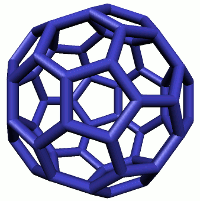

Dr. Florentino López Urías
Main Area of Expertise: Nanoscience and Nanotechnology: Magnetism
Work Address: Camino a la Presa San José 2055, Col. Lomas 4ª Sección C.P. 78216, San Luis Potosí, S.L.P., México.
Work Phone: +52 (444) 8342000 ext. 7238
Electronic mail: flo@ipicyt.edu.mx, flo.lopezurias11@gmail.com.
Welcome to López-Urías group, our research is focused on the study of the electronic properties of diverse carbon and transition metal nanostructures. Theoretical methods such as density functional theory, tight-binding, force-fields, among others are used to describe magnetic, optical, structural, and catalytic properties of fullerenes, carbon nanotubes, graphene, carbon nanoribbons, carbon clusters, transition metal (TM) chalcogenide layered materials, TM-clusters, TM-wires, etc. We have a special interest in the development of spintronic and valleytronic topics in nanomaterials.

RECENT PUBLICATIONS:
-
Elias Andrade, Florentino López-Urías, Gerardo G. Naumis. Topological origin of flat-bands as pseudo-Landau levels in uniaxial strained graphene nanoribbons and induced magnetic ordering due to electron-electron interactions. PHYSICAL REVIEW B 107, 235143 (2023).
-
Francisco Sánchez-Ochoa, Alberto Rubio-Ponce, Florentino López-Urías. Pressure-induced reentrant Dirac semimetallic phases in twisted bilayer graphene. PHYSICAL REVIEW B 107, 045414 (2023).
-
Armando D. Martínez-Iniesta, E. Muñoz-Sandoval, J. P. Morán-Lázaro, A. Morelos-Gómez, F. López-Urías. Zigzagging Graphitic Nanofibers: Synthesis, Characterization, and Acetone Vapor Sensing. DIAMOND & RELATED MATERIALS 138, 110209 (2023).
-
Daniel Salgado-Blanco, Diana S. M. Flores-Saldaña, Fabiola Jaimes-Miranda, Florentino López-Urías. Electronic and Magnetic Properties of TATA-DNA Sequence Driven by Chemical Functionalization. JOURNAL OF COMPUTATIONAL CHEMISTRY 44 (12), 1199-1207 (2023).

RESEARCH TOPICS
-
Thermodynamics in magnetic nanostructures and clusters
-
Electron emission and transport properties of nanostructures
-
Design and simulation of new nanostructured magnetic materials
-
Chemical doping in carbon nanostructures
-
Magnetic alloys of nanostructured systems
-
Design of new magnetic laminar systems
-
Design and simulation of magnetic molecular systems
-
Nanostructured magnetic quasicrystals
THEORETICAL MODEL SKILLS
-
Hubbard model (exact calculations)
-
Quantum Heisenberg model (exact calculation)
-
Classical Heisenberg model (Monte Carlo Simulation)
-
Modeling from first principles and Molecular Dynamics
-
Ising model (exact calculations)
-
Hubbard-Holstein model (electron-phonon interaction)
-
Super-exchange model type Kondo (Monte Carlo Simulations)
-
Hückel and extended Hückel model
-
Micromagnetism (Dynamic Simulation of Magnetization)
NUMERICAL METHODS AND SOFTWARE
-
Method of Lanczos (diagonalization of large matrices)
-
Monte Carlo method (minimum energy surfaces)
-
Genetic algorithms method (geometric optimization)
-
SIESTA and TRANSIESTA codes (Electronic structure, Base: LCAO)
-
ABINIT code (calculations of electronic structure, Base: P-Waves)
-
OOMMF code (micromagnetism, Equation Landau-Lifshitz-Gilbert)
-
PWSCF code (calculations of electronic structure, plane waves)
-
GULP (Force-field calculations
-
YAMBO (Many-body perturbation theory: GW and BSE calculations)




